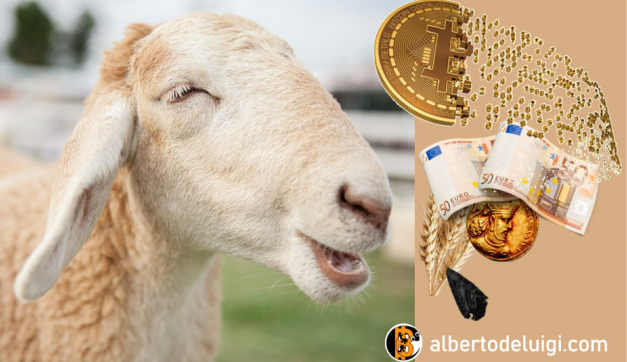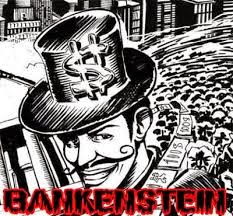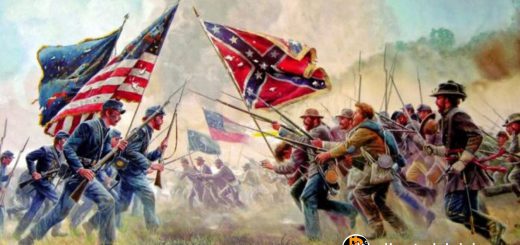What is money: intrinsic characteristics13 minuti
This article is a translation from the italian version on this blog. The automatic translation has been briefly checked by the author, but some errors or inaccuracies may remain.
The birth of money is historically du to a spontaneous market mechanism. The first forms of money were nothing but a commodity selected for its particular characteristics, which made it preferable for those who wanted to hoard or store goods. In order for it to be identified as good money, a commodity must have the following characteristics:
- Maintain its value over time, for which it needs the following intrinsic characteristics:
1.1 Non-perishable
1.2 Must have a limited supply: low or no production compared to the quantity in circulation (stock-to-flow).
(On the demand side, factors that contribute to the determination of value are extrinsic to the commodity itself) - Must be easily salable (marketable), therefore have the following intrinsic characteristics:
2.1 Divisible
2.2 Fungible
2.3 Verifiable
2.4 Transferable
- Must be easy to secure (from theft or accidental loss) in the fastest and least costly way possible. This generally derives from intrinsic characteristics such as easy portability.
1. Value over Time
Regarding the value of a good, it is obviously preferable to store a good that maintains or increases its value over time (1), rather than one that decreases in price. The leader of a primitive tribe probably collected obsidian because he considered it of great usefulness in his era, especially for the construction of weapons and tools, while merchants from a later era would have preferred to collect gold. In both cases, there are historical circumstances in which there is a certain demand for a particular good, which therefore is preferred by the actors involved. This happens due to factors related to demand and sometimes extrinsic to the good, such as tastes, customs, political, philosophical, religious, or scientific theories. However, there are also objective factors that contribute to the maintenance of value over time, which are intrinsic to the good and related to supply.
The first of these factors, common to almost any form of money, whether ancient or modern, is non-perishability (1.1). For example, salt (from which the term “salary” comes) is well preserved over time and therefore preferable as a store of value, rather than wheat, which can rot, become moldy, or be attacked by insects or parasites.
A second aspect necessary for maintaining value is the expectation that the supply of the good on the market will not increase excessively compared to what is in circulation, that is, that the supply is limited (1.2). Historically, limited supply has been associated with those goods that are relatively difficult to find or forge, produce. This certainly depends on intrinsic characteristics, but also on extrinsic ones (such as uses, customs, and technology).
Regarding limited supply, it should be noted that it is not enough that there is little availability of a good in a specific place and time: in Milan, for example, there are not many Jangostor shells decorating homes, but few would choose to have their savings in shells, as they could expect a large distributor to bring a caravan of them from abroad to the city at any moment, causing the price to drop. The discriminant is not therefore a limited supply today, but the expectation that it will remain limited in the future.
A limited availability of a good is a concept that is necessarily relative, derived from the relationship between demand and supply. It is not enough to have a good stock-to-flow ratio between the quantity produced and in circulation, as value also depends mainly on demand: the global demand for Jangostor could be due to a passing trend, on which a prudent investor would not rely, as if consumer preferences changed, assuming the production as invariant (and therefore the same stock-to-flow ratio), the value of a good could still change significantly. However, since these characteristics also depend on extrinsic factors, such as consumer preferences or coercive intervention by political forces, they are not particularly significant for the theoretical categorization of the peculiar characteristics of money.
2. The saleability
In addition to maintaining value, there is a second fundamental characteristic that contributes to making a good a currency, namely its saleability (2). The more easily it can be sold, the greater the preference to accumulate and desire it, and therefore to consider it as a medium of exchange. While it is undoubtedly recognized by everyone that a Jangostor shell and a Ferrari car have economic value, their value cannot be directly compared to the value of any other good in the market, at least not without the use of an intermediate means of exchange as a measure of value. It is very difficult to calculate the value of a Ferrari in terms of sheep or a jar of mayonnaise in terms of personal computers. Imagine having to go grocery shopping at the supermarket armed only with our flock of sheep: it would take a century at the checkout before we could agree on how many sheep (or pieces of sheep) to use to pay for our groceries. For this reason, a car or a flock of sheep is not a good currency, at least not by today’s standards.For a good to be as saleable and exchangeable as possible, it must be:
- (2.1) Divisible at will: I could detach a door from the Ferrari and attempt to exchange it for a sheep, but the damage would probably be greater than the profit derived from the exchange. Instead, salt or metal (possibly by melting it into larger or smaller parts) can be divided almost at will, and are therefore more easily exchangeable and saleable.
- (2.2) Fungible: fungibility is the full substitutability between two elements due to the absence of individuality of each. Two sheep of the same breed, age, and weight can differ greatly in value, for example, because one of them may be sick. Sheep are less fungible than gold, because a buyer may want to negotiate the price for each individual sheep involved in the exchange, whereas a gram of gold will, except in exceptional cases, always be equal in value to another gram of gold (despite this, in ancient times sheep were commonly used as a primitive form of money, in italian an alternative term for “money” is “pecunia” which comes from “pecus”, the latin word for sheep).
- (2.3) Verifiable: the greater the certainty that the merchandise actually corresponds to what is declared, the more easily it is saleable. If a certain good is easy to verify, all other conditions being equal, it will be preferred. In addition, the value of the merchandise must be estimable with a certain degree of accuracy using simple (and inexpensive) methods of observation or measurement.
- (2.4) Transferable: the greater the value of the good compared to the cost of moving it, carrying it, or transferring it, the more that good will be desired and exchangeable, and therefore preferred as money.
3. Security
Finally, there is a third characteristic related to our need for security and privacy: everyone prefers a store of value that is easy and inexpensive to secure (3), protect from prying eyes, theft, or confiscation. From this point of view, a diamond that can be worn on a finger or hidden in a safe is certainly preferable to a car or a herd of sheep. This characteristic usually stems from good portability but can depend on both intrinsic and extrinsic factors.
Is Bitcoin money?
Those who know Bitcoin know that it was specifically designed to meet all of these characteristics, to the best of contemporary science’s ability. There is no asset that, to date, has better intrinsic properties than Bitcoin to qualify as a money. However, all the listed characteristics are necessary for an asset to become a good currency, but not sufficient. Only with the gradual adoption of that asset as money”, which can take years, decades, or centuries, a network effect triggers, making it more convenient for everyone to prepare to receive and use it themselves.
Bitcoin is still too young to be universally considered as a medium of exchange today. Max Planck said that “a new scientific truth does not triumph by convincing its opponents and making them see the light, but rather because its opponents eventually die, and a new generation grows up that is familiar with it.” This is as valid for theory (science) as for the practical application of economic and monetary theory.
A good unit of measurement?
When an asset becomes a currency because it reflects the above characteristics, it will also become the unit of account for other goods in the economy. However, this does not mean that it is a stable unit of measurement or that it should be. The pursuit of price stability is a meaningless mantra that haunts us. Being a “stable unit of measurement” is entirely contingent on the currency, not necessary.
Today we have a fiat currency created for the purpose of “price stability” (which is actually constant inflation), but what is the advantage? Prices at the supermarket are constantly adjusted based on the complex dynamics of costs and revenues in a free market and will vary regardless of the purchasing power of the currency. The ECB can infuse all the science it wants into its calculations, but the price of Kinder Brioss will inevitably change. When we have to decide what to grab from the shelves of the supermarket, we are not at all advantaged by the fact that the euro is worth in purchasing power exactly the same as last year, since the value of a euro is calculated on a weighted average of the prices of a basket of goods chosen as a reference. Goods in the basket that tend to deflate, such as electronics, where technology allows for lower prices, or inflate, such as real estate in more trendy city centers, will heavily impact the basket average in different ways. Therefore, even in the unlikely case that the snack market undergoes no changes in costs and revenues of any kind, Kinder Brioss will have a different price today than a few years ago, whether the monetary regulator likes it or not. And the consumer cares little about this.
What matters to the consumer is that their assets do not lose purchasing power (value over time) and that they can exchange them for the widest possible selection of goods, as needed (saleability). If stability means that a currency does not depreciate, then it is certainly appreciated compared to a situation of volatility. But it is not stability in itself that constitutes the advantage. In fact, if the currency appreciates significantly compared to a basket of goods, the consumer is happy, and yet the currency cannot be said to be stable. Everyone’s desire is to avoid devaluation, not to maintain equal purchasing power relative to a basket arbitrarily determined by some bureaucrat.
—-
Annex: The Injustice of a wrong basket
To adjust the money supply of money based on a basket of goods and services can lead to highly distorted monetary policy choices. For example, oil (fuel) in the ECB’s HICP index weighs 4% of the total. Now, let’s assume that we live in a society where oil is a commodity of little interest and whose commercial volumes are quite limited, as there are many alternative sources of energy that are cheaper and cleaner, which are used. In this case, the weight attributed to oil would be excessive, and if oil were to depreciate, it would result in a disproportionate decrease in the general price of the basket.
When prices decrease (of goods and services compared to money), there is “deflation” in the economy. According to the policies of a central bank, this would likely require a monetary expansion intervention to compensate. But if the weight of oil on the basket was too high, then it will lead to an “excessive” expansion of money supply. On what basis is “excessive” evaluated, and who could be harmed? There are two types of answers to this question, one technical and the other related to considerations of “social justice.”
From a social justice point of view, it should be emphasized that the composition of a basket, if it influences monetary policy decisions, can have very different effects on individuals who, based on their consumption preferences, are differently affected by an expansion or contraction of the money supply. Let’s say that Bob the hermit and preacher lives only on bread and milk and is not interested in other types of goods, such as electronics, oil derivatives, or real estate. If the prices of all goods except bread and milk were to decrease, there would be monetary expansion. In fact, if (almost) all goods depreciate, it means that there has been a general increase in production and trade compared to the money supply. In this case, the central bank requires an adjustment through monetary expansion. Consequently, if before the expansion 1€ bought 1 baguette or 50cl of milk, given that the amount of € has increased, 1€ will now be worth relatively less and will buy less baguettes and milk (which, by assumption, are the only goods whose supply and volume of trade have remained unchanged). The prices of other goods, such as houses, oil and smartphones, will have remained unchanged because the expansion has occurred to maintain the euro as a perfect unit of account among these goods. However, the euros that Bob owns will allow him to buy less bread and milk than before. If this does not represent a problem for the average person because their purchasing power over the chosen basket of goods is almost unchanged, it might be a huge problem for Bob, who spends almost everything on milk and bread whose prices have risen.
For the avoidance of doubt, it is specified that monetary expansion affects the purchasing power of all savers indiscriminately. If, however, those who consume electronics simply do not perceive an increase in purchasing power dictated by progress, which would otherwise (in the absence of central bank intervention) cause the prices of these goods to fall, Bob is more radically affected by monetary expansion, because it diminishes his ability to buy necessities that he could previously afford.
Now, let’s assume that we live in a society of many Bobs, where bread and milk constitute a large part of consumption. In this society, there is a corrupt clique of central bankers who hate bread and milk, considering the weight of these goods as negligible percentages compared to the total value of the basket. It is clear that with a monetary expansion bankers will be advantaged over the many Bobs who love bread and milk. It should also be considered that bankers, being among the entities (together with states) with the largest debts, benefit from a lower cost of money (lower rates) that can be achieved through monetary expansion.
It is certainly true that the chosen basket can never fully satisfy everyone, although authorities (in theory) must seek to adjust it to models of equity, reflecting the purchasing habits of the majority of the population. Then the question raises: which goods to include in the basket? How many and which types of food, raw materials or processed products? In the case of imperfect substitutes (e.g. two different types of cars), which type should be considered, and with what weight? And how should the price of real estate be calculated? Based on rent per square meter or on the sale price of luxury homes, or a weighted average of various types of homes? There is a vast literature on the subject, and there will never be a perfect index. The basket used by the ECB for the HICP index is this one.
Sadly, whatever inflation index we use to calculate the average consumption habits of the population, there will be some goods more volatile (in price) than what is actually derived from a free market equilibrium of supply and demand. In short, any monetary expansion decided on the basis of a particular inflation index will distort the “value” attributed to goods by individuals through their genuine preferences. Authorities should bear in mind the redistributive effect that the choice of one basket rather than another can have.
When the central bank applies monetary expansion, it injects money that is not “distributed” evenly to the entire population, but to certain “classes”. Generally, those who request a loan: therefore a national government (due to public debt), a bank on the interbank market, a financial intermediary that carries out speculative operations, or an economic agent that borrows from a bank. In addition, the interest rates paid to the central bank generate a profit, distributed to national banks (Banca d’Italia, Deutsche Bundesbank, etc.), and from there to national governments. The newly created money gives greater purchasing power to individuals operating in certain economic sectors (or certain institutions) than to other individuals, resulting in a redistribution that does not follow either meritocratic models or the demand and supply mechanisms of a free market.
Let’s think about how the price structure and distribution of wealth in society would be different if there were no monetary expansions. Without a doubt, we would see fewer sumptuous buildings in the possession of large banks and intermediaries and less power in the hands of national governments, while the value of the work and production of that segment of the population that is farthest from the redistribution of money, such as farmers and workers of raw materials, would increase. Paradoxically (and unfortunately), labor movements today tend to express themselves in unions that aim to reach agreements with the state to share a slice of the cake, rather than fighting for an alternative to the “cake” mechanism.






















